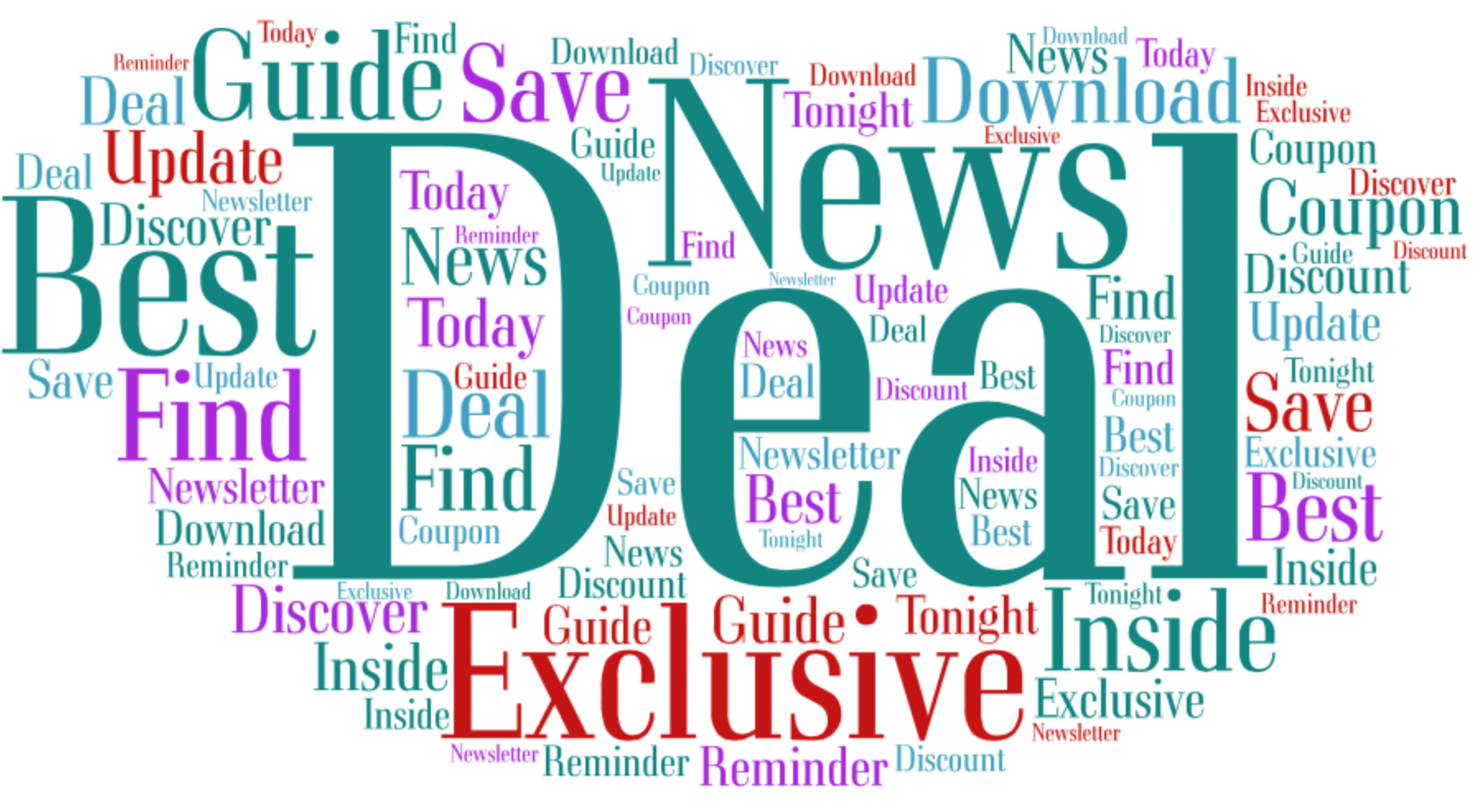Follow Lilach
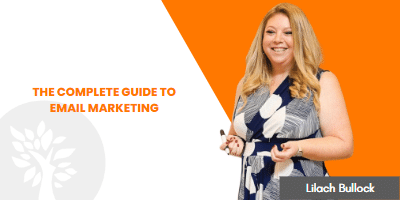
The complete guide to email marketing
Want to perfect your email marketing campaigns? Are you just starting on building an email list? Whether you’re a complete beginner or simply want some tips on how to get more out of email marketing, read on for the complete guide to email marketing.
Click on the links below to jump to a section:
Why email?
Who should be using email marketing?
How to get started with email marketing
Incentives
The first email
The regular newsletter
The sales email
Email and mobile
Email subject line
Drip email marketing
Segment your list
Time
A/B Testing/Split Testing
Measuring your email marketing performance
Useful tools
Why email?
What is email marketing?
Email marketing is a common marketing strategy that involves sending (commercial) emails to leads, prospects, customers and past customers with the aim of engaging them, converting them and making more sales.
Email marketing has been around for years now and it still is one of the top marketing channels for making sales and driving more traffic. It’s pretty easy to keep up with once you’ve gotten the hang of it, and it brings in results, more so than many other marketing channels:
- Get more traffic
- Reach more people
- Make more sales and conversions
- Keep your audience up to date with new releases
- Build stronger, long-lasting relationships with your audience, leads and prospects
- And last, but not least, email is here to stay – at least for the foreseeable future!
[clickToTweet tweet=”The complete #guide to email marketing via @lilachbullock #emailmarketing” quote=”The complete #guide to email marketing via @lilachbullock #emailmarketing”]
Who should be using email marketing?
Email marketing is a channel that works across all types of businesses and websites; whether you have a small blog or a huge online or offline store, you would still benefit from using email marketing.
Whatever your business or website is about, you should start gathering emails and subscribers as soon as possible – it’s’ going to be of huge help in the long run as your list will grow throughout the years.
How to get started with email marketing
 Ideally, you should start building an email list and creating an email marketing campaign as soon as your business and/or website is up and running.
Ideally, you should start building an email list and creating an email marketing campaign as soon as your business and/or website is up and running.
The sooner you start, the better – otherwise, you’re going to lose a lot of potential customers, traffic and significant connections.
The first thing to do as you get started is to establish what goals you want to achieve from your email marketing campaign.
If you’re clear on what your goals are, it will help you create better campaigns so that you achieve exactly what you need to achieve.
A few examples of common goals are:
- To promote a product launch
- To promote your blog
- To drive traffic to your website
- To promote a webinar, online course etc.
- To increase sales
[clickToTweet tweet=”How to get started with email marketing via @lilachbullock #guide #emailmarketing” quote=”How to get started with email marketing via @lilachbullock #guide #emailmarketing”]
Once you know what your goals are, it’s time to start building your list.
Incentives
In order to get people to sign up to your email list, you need to think of incentives that will give them a good reason to sign up.
People want to avoid spam at all costs and giving your email up left and right is asking for spam and phishing emails.
Not to mention, the average email user is bombarded with emails every day, even when you can’t remember subscribing to any of them.
So why would they want to subscribe to yours too?
Why would they add to their growing pile of daily inbound emails?
In order to build up a good list, you need to offer them incentives that will make it worth their while to sign up for your emails. In other words, you need to provide value. Also, consider using an SPF checker and taking other email security steps to avoid spamming and phishing attacks.
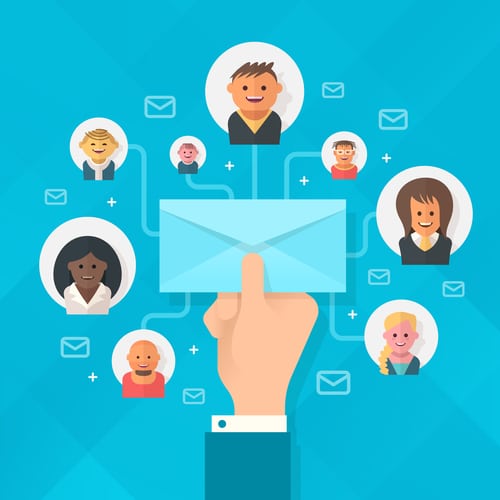 There are numerous types of freebies you could be offering as subscription incentives, such as:
There are numerous types of freebies you could be offering as subscription incentives, such as:
- eBook
- Ultimate guide
- Checklists and cheat sheets
- Templates
- List of useful tools
- Educational podcast
- Educational video
- Webinar
One of the types of incentives that have worked best for me in the past, are content downloads.
Every time you write an extensive guide, or a how-to post, you can add a content download for people to get. It can be a PDF version of your guide, or a checklist, for example, but whatever it is, it needs to be related to the post they’re writing.
This is a great way of gathering more subscribers, as the content download is very relevant to the reader, which makes them more likely to want to subscribe than just any guide or e-book that you might have on your website.
The one thing you should keep in mind is that whatever you might be putting up to be downloaded, it has to be something that is of value to your audience.
If you’re not sure what you could have to offer, one way to go about it is to study the competition and see what they’re giving away – use that not to copy but to get inspiration.
Explain what your emails are about
Apart from offering incentives to attract more subscriptions, another important aspect is to explain what your website visitors are getting into as subscribers.
There are several ways to go about this. For example, you can do it directly within your opt-in form:
“Subscribe for all the latest Facebook news and get this Ultimate Guide to Facebook Ads for free!”
You can also do it in your first email to a new subscriber. Use the opportunity to explain what you’re going to email them about, as well as to assure them that you won’t be bombarding them with emails, but rather send regular updates with useful information that they would benefit from.
Look at it like a trade: you get to advertise yourself on a constant basis, while also providing them with something valuable to potential subscribers.
The first email
To create a good email marketing campaign, you need to make sure all of your subscribers get an introductory first email right after they’ve subscribed.
Take the opportunity to thank them for subscribing to your email list and, like I mentioned earlier, to explain what you’re going to email them about in the future.
Make sure to also highlight that they can easily unsubscribe if they want to; otherwise, you’re going to alienate visitors and potential customers.
These are some of the main things you should inform subscribers about in your first email:
- How often you’re going to email them
- What you’re going to email them about
- Will they be getting any more exclusives?
- How can they unsubscribe?
[clickToTweet tweet=”The complete #guide to email marketing via @lilachbullock #emailmarketing” quote=”The complete #guide to email marketing via @lilachbullock #emailmarketing”]
The regular newsletter
The best use of a newsletter is to use it as a way to update your list on recent events and blog posts and also include a personal touch.
Newsletters are perfect for cementing relationships with your list, while also driving a little bit more traffic to your website.
When it comes to newsletters, I feel like it’s a good opportunity to show some of your personality – whether you’re one entrepreneur or a big company.
The sales email
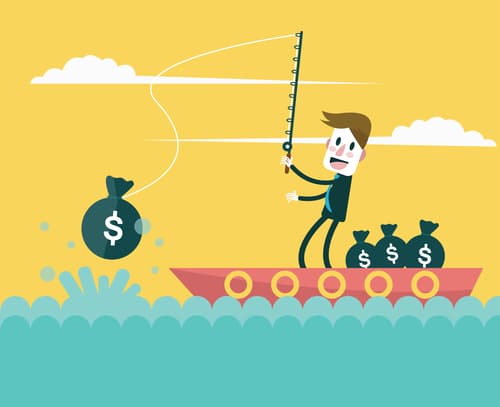 The thing about newsletters is, they don’t exactly put any money on the table. They serve other purposes, such as driving traffic to your blog or website and building and nurturing relationships with your list, but, there is no ROI directly from them.
The thing about newsletters is, they don’t exactly put any money on the table. They serve other purposes, such as driving traffic to your blog or website and building and nurturing relationships with your list, but, there is no ROI directly from them.
That’s where sales emails come in.
A lot of people have a fear of selling to their list – they’re afraid of alienating their list and putting them off.
But, the harsh truth is, your list costs a lot of money and time (email marketing tools, etc.), so if you’re not selling anything once in a while, there’s little point in just having freebie-seekers – that’s not going to bring in any ROI.
[clickToTweet tweet=”The complete #guide to email marketing: the sales email via @lilachbullock #emailmarketing” quote=”The complete #guide to email marketing: the sales email via @lilachbullock #emailmarketing”]
So, don’t be afraid to send sales emails; just, don’t overdo it by sending too many or sending irrelevant sales emails.
The way you should word your sales emails depends a lot on what you intend to sell.
Do you want to promote a new product? Then, a short and sweet email showcasing the email would do the trick.
Or, if you sell a service, use the sales email to explain how you would help a particular business/company and talk about how you’ve helped similar businesses in the past.
Lately, I’ve been trying a new (to me) type of sales email: the long-form sales email.
Basically, it’s almost like a short blog post where I give my subscribers a useful tip and then I explain how I can help them.
When it comes to sales emails, I would recommend experimenting with both short form and long form email formats to see how it affects your results. Check out some sales email examples for inspiration – this post has some really good ones to give you a better idea of how to sell.
Email and mobile
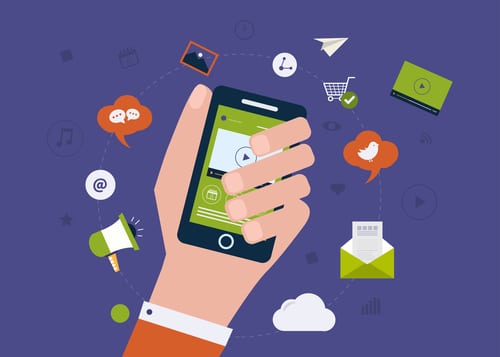 Many people nowadays access their emails via their mobile phone.
Many people nowadays access their emails via their mobile phone.
In fact, sources say that 55% of emails are now opened on mobile devices.
While the exact stats differ among this years’ email research studies, one thing they all agree on is that most emails are now opened first on a mobile device, and people started creating email template examples for those kinds of devices.
This means that you should make sure your emails are properly optimised for phones and tablets so that they are easy to read on whichever device your subscribers choose to use. One way to quickly optimize emails is to use an email template builder — emails created with them are responsive by default. Even better, templates will help you keep the branding consistent in all your emails.
Email subject line
Your emails’ subject line is one of the most important aspects of a good email, as it’s what determines if your subscribers are going to open the email and read it.
To put it simply, you need to keep your subject line short and sweet and not too sales-y. From here, it’s a question of trying to attract your subscribers’ attention in a long list of unopened emails.
It’s quite similar to blog posts and their headlines – in both cases, the titles are the main deciding factors for opening and reading them. If the headline is not good enough, or catchy enough, you simply won’t get the click; or in this case, you won’t get your email opened.
Here are some tips for subject line best practices:
- Keep it short and sweet – people often open their emails on their mobiles, so you want to make sure they can see the important keywords in your subject line that will determine them to open the email
- Always personalise where possible, by including the recipients’ name in the subject line
- Demonstrate value/explain what the email is about: “Increase your email subscriptions by x%” or “here is your guide to conversion optimisation”
- Deadline subject lines: do you have any exclusive offers or discounts? Use subject lines like “Exclusive offer for you, [first name]” or “Last day to get your free gift!”, for example
- Use numbers: I’ve found that just like blog posts with numbers in the title tend to work better and get more traffic and engagement, the same happens with email subject lines. It can be something like “10 ways to increase your conversion rate today”, just don’t ever put in ant prices in your subject line – your email will just go to spam
- Use action-oriented verbs first – these types of verbs tend to attract more opens, so use words like “discover” or “find the best way to…” or “get the new…”
[clickToTweet tweet=”The complete #guide to email marketing: the subject line via @lilachbullock #emailmarketing” quote=”The complete #guide to email marketing: the subject line via @lilachbullock #emailmarketing”]
Make sure to test out different types of subject lines to find out what works best with your audience and subscribers.
By using an email marketing tool, you can easily set up A/B testing to test out different subject lines for the same email, and see which one gets the most opens and clicks.
Drip email marketing
Drip email marketing or email marketing automation is a way to make sure all of your new subscribers get the emails that you want them to see, in an order that makes sense – an order that’s designed to help convert those people faster.
Drip emails can also help you retain more subscribers and turn more subscribers into customers – when done right!
There are two main ways to set up a drip email marketing campaign: create a specific timeline for sending a set of emails to new subscribers, or send specific emails based on your subscribers’ actions.
This can all sound daunting, but with the right tool, it can be easy to set up; and the best part? You get to write all of your emails in one go, and the automation service does all of the work for you so you don’t have to send new emails every week, yourself.
Here are a few situations in which drip emails can get you better results:
- New subscribers and buyers: whether they’ve recently purchased one of your products or services, or simply subscribed to your email list, this is the perfect time to reach out to your new users and welcome them. Have they just bought something from you? Send them a couple automated emails that can help them make the most out of their buy, such as top tips, case studies and examples they can use. Have they subscribed to your blog? After sending them a welcome email, you can send them a list of all your best blog posts
- Reengage unsure customers – more often than not, people will abandon their shopping carts when shopping online, whether it’s a physical or digital product. A few emails sent at a strategic time though, can help bring them back and turn them into customers. Wait a few hours after they left your website and then send them an automated email reminding them their shopping cart is still there and you’re massively improving the chances that they will come back and actually buy.
Segment your list
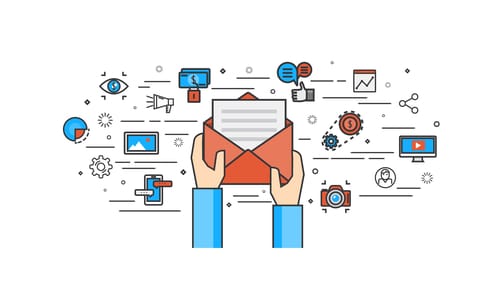 Segmenting your email list can be a lot of work, but doing it can help you get better results, improve your open and click rates and get more traffic and more conversions and leads. In fact, you could get as much as a 58.21% higher click rate on average for most types of segmented email marketing campaigns.
Segmenting your email list can be a lot of work, but doing it can help you get better results, improve your open and click rates and get more traffic and more conversions and leads. In fact, you could get as much as a 58.21% higher click rate on average for most types of segmented email marketing campaigns.
By segmenting your list, you can send better emails to the right people, which in turn, improves your open and click rates. List segmenting works hand in hand with drip email marketing, so by setting up both, you have the potential to massively improve your results.
By properly segmenting your list, you can also get fewer un-subscribers. If you are only sending them emails that they would be genuinely interested in, then they’re more likely to remain subscribers.
How you segment your list is completely up to you; to give you a few examples, you can segment them
- By the date they joined your subscriber list
- By interest
- By customer type and past purchases
- By location, age and gender
- By job title and industry
- By shopping cart abandonment
[clickToTweet tweet=”The complete #guide to email marketing: segmenting your list via @lilachbullock ” quote=”The complete #guide to email marketing: segmenting your list via @lilachbullock “]
It’s up to you how you segment your list and it can vary depending on your type of business and how your list interacts with you. But good segmentation, coupled with an appropriate drip email marketing campaign can really improve your results and help you achieve your goals much faster.
Most email marketing tools offer segmentation features, such as ConvertKit.
Time
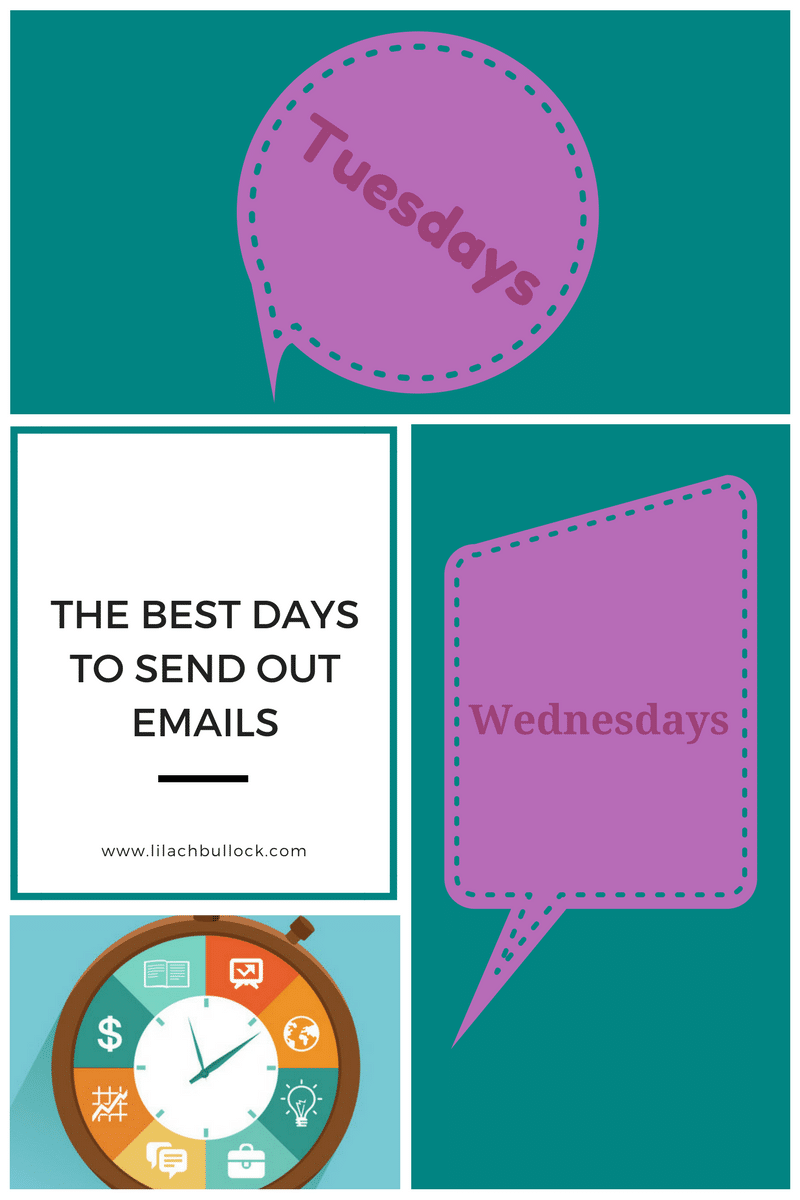 Another important thing to consider is the time you send your email.
Another important thing to consider is the time you send your email.
There are some ‘rules’ that work across industries, but generally, it’s best to test when your audience is most likely to open one of your emails.
For example, don’t send out your emails in the middle of the night, when your audience is sleeping (this is particularly important for businesses operating in different time zones) or Friday at 5 p.m. when most people are getting ready for the weekend and not as interested in checking their emails and such.
The best time to send out emails is not only are they getting them while they are at their computer or phone, but also when they have the time to take action.
If you’re emailing your list about a new blog post on Friday evening, they will most likely prefer to get ready for a night out then start reading another article.
And by the time Monday comes, they’ll completely forget about your email and have many other emails that need dealing with.
The best time to send your emails differs, so the best way to find the right days and times for you, use split testing. However, generally, the best days for sending emails are considered to be Tuesdays and Wednesdays.
A/B Testing/Split Testing
In order to get the most out of your email marketing and make sure you get more clicks, leads and conversions, use split testing to perfect your strategy and campaign.
With split testing, you make small changes in your emails and try out the two versions to see which one gets you the best click-through rate. The best way to go about it is to only test one change at a time; otherwise, you might not know exactly what it was that got you better results.
There are several things that you can change in your emails and test, such as:
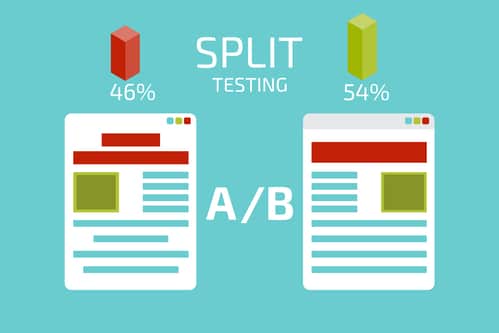 Subject line: the more you test out different types of subject lines, the more you’ll be able to tell what type of headline works best with your audience
Subject line: the more you test out different types of subject lines, the more you’ll be able to tell what type of headline works best with your audience- Time: as I mentioned earlier, the time you send out your email can have a big impact on its success and click through rate
- Call to action: if your email contains a call to action, try out different wordings to see which ones get the most conversions
- Email layout: try out different placements of your email content, different spacing, etc.
- Email content: it’s also useful to try out different wording in your email until you find the style that your audience responds best to
- Images: visual content can be very powerful and can have different impact on different people, so it’s worth trying out different imagery to see what works best
- From name: the name you use can have an impact on your clicks; for example, it could work better if you use your company name, or you could get more people to open it if you used your real name. Ideally, it should be a name that the people in your list will recognize – otherwise, they’ll likely consider it to be spam and not open it
[clickToTweet tweet=”The complete #guide to email marketing via @lilachbullock #emailmarketing” quote=”The complete #guide to email marketing via @lilachbullock #emailmarketing”]
Measuring your email marketing performance
 Email marketing analytics are extremely important as they can help you create better email marketing campaigns, get more subscribers and less un-subscribers and general get better results and more clicks.
Email marketing analytics are extremely important as they can help you create better email marketing campaigns, get more subscribers and less un-subscribers and general get better results and more clicks.
Thankfully, email marketing tools have built-in analytics and they generally have all the stats you need in order to make an informed decision.
It’s important to check your analytics often so that you can make changes to future campaigns:
- Opt-in forms: which opt-in forms are getting you the most subscribers and which the least? See if you can find a common link among the best, as well as the worst and use that information to create better, more engaging subscription forms.
- Open rate: which emails are getting the biggest open rate and why? This can help you figure out what types of subject lines attract your subscribers’ attention the most. A good open rate over more of your emails can also mean that you’ve managed to build a good relationship with your subscribers, while if most of your emails don’t get opened, that could mean your subscribers are deleting them instantly or simply ignoring them.
- Click rate: Which emails are getting the most clicks? The click through rate usually has to do with the content of your email. They’ve already opened your email, so it’s fair to say they were interested enough to read it or quickly go through it. So why aren’t they clicking on your links? In most cases, it’s because you haven’t managed to convince them with your copy that they should click.
- Unsubscriptions: find out at what point users are unsubscribing. With this information, you can make changes to the offending emails and try to get fewer unsubscriptions in the future. A high unsubscription rate can also be a sing of no segmentation or bad list segmentation. If you strive to only send the different members of your list emails that they would be interested in, you can get fewer unsubscriptions.
Useful tools
ConvertKit
ConvertKit is an email marketing tool designed specifically to help bloggers make more conversions. Although it hasn’t been around long, it’s grown very rapidly to become one of the email marketing tools on the market.
You can use ConvertKit to create forms, landing pages and send out email broadcasts. One of the best features, though, is its’ drip email marketing automation. Setting up a drip sequence can get very complicated with other tools, but with ConvertKit, it’s extremely easy to figure out and set up drop email marketing automation. Read here for my full review of ConvertKit.
[clickToTweet tweet=”Useful email marketing tools @convertkit via @lilachbullock #emailmarketing #guide” quote=”Useful email marketing tools @convertkit via @lilachbullock #emailmarketing #guide”]
OptinMonster
OptinMonster is a lead generation and opt in form tool. It’s one of the best I’ve ever tried, as it’s massively improved my results since I’ve started using it.
The optin forms are very easy to create, customise and optimise for conversions. OptinMonster also has a lot of useful features designed to help you get the best possible results, such as exit intent technology, page level targeting and very easy to use A/B slip testing tools.
[clickToTweet tweet=”Useful email marketing tools @optinmonster via @lilachbullock #emailmarketing #guide” quote=”Useful email marketing tools @optinmonster via @lilachbullock #emailmarketing #guide”]
Another useful tool is this company information database, to help you find companies in the US.
Conclusion: email marketing
A good email list still is and most likely will continue to be one of the top resources you can have as a business or marketer. And while it can be a lot of hard work to keep up a strong email marketing campaign, the results make it well worth it.
What are some of your tips for writing better emails? How are you improving your open rates and click-through rates? Let me know in the comments section and please share if you enjoyed this post:)

Follow Lilach




